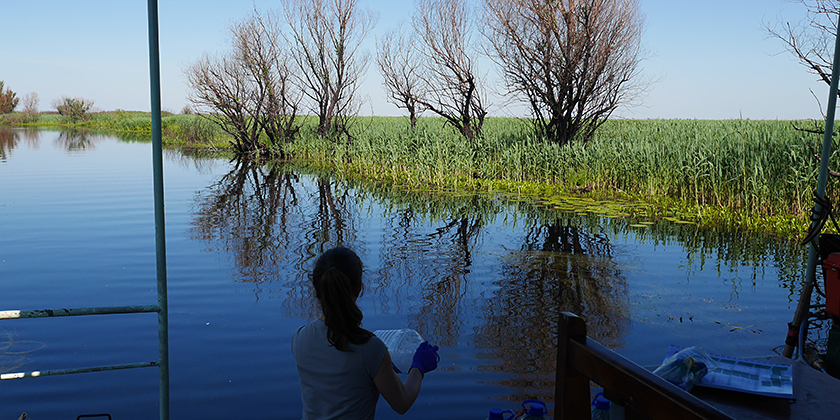Department Surface Waters - Research and Management
Carbon Cycle in the Danube Delta

Rivers and lakes release significant amounts of greenhouse gases like carbon dioxide and methane to the atmosphere. Climate modelers have only limited information on this process. The C-CASCADES project aims at changing this.
As part of this project, we are studying the temporal and spatial variation of carbon dioxide and methane concentrations, together with their sources and emission rates in the Danube Delta. This second largest river delta in Europe receives stream water from 19 European countries. With its closely connected river branches, channels, and flow-through lakes, it offers an interesting setting to study carbon cycling and atmospheric emissions in different aquatic environments.
Approaches
We investigate the temporal and spatial variability of the transformation and outgassing of carbon in different aquatic habitats of the delta. Over a 2-year period, we monitor dissolved and particulate carbon species. We combine this with stable and radiocarbon analysis and in-situ measurements of carbon dioxide and methane concentrations and fluxes.
Publications
Tim Kalvelage (2016): Dünger fürs Klima? Forschung im Mündungsdelta der Donau, Polykum, Ausgabe 01 2016/2017, 14-17. pdf, 492KB
Cooperations
Tim Eglington (ETH Zürich), Asa Horgby, Tom Battin (EPFL) Anna Canning, Peer Fietzek (Kongsberg Maritime Contros GmbH)
Funding
C-CASCADES project (EU Horizon 2020 program)
